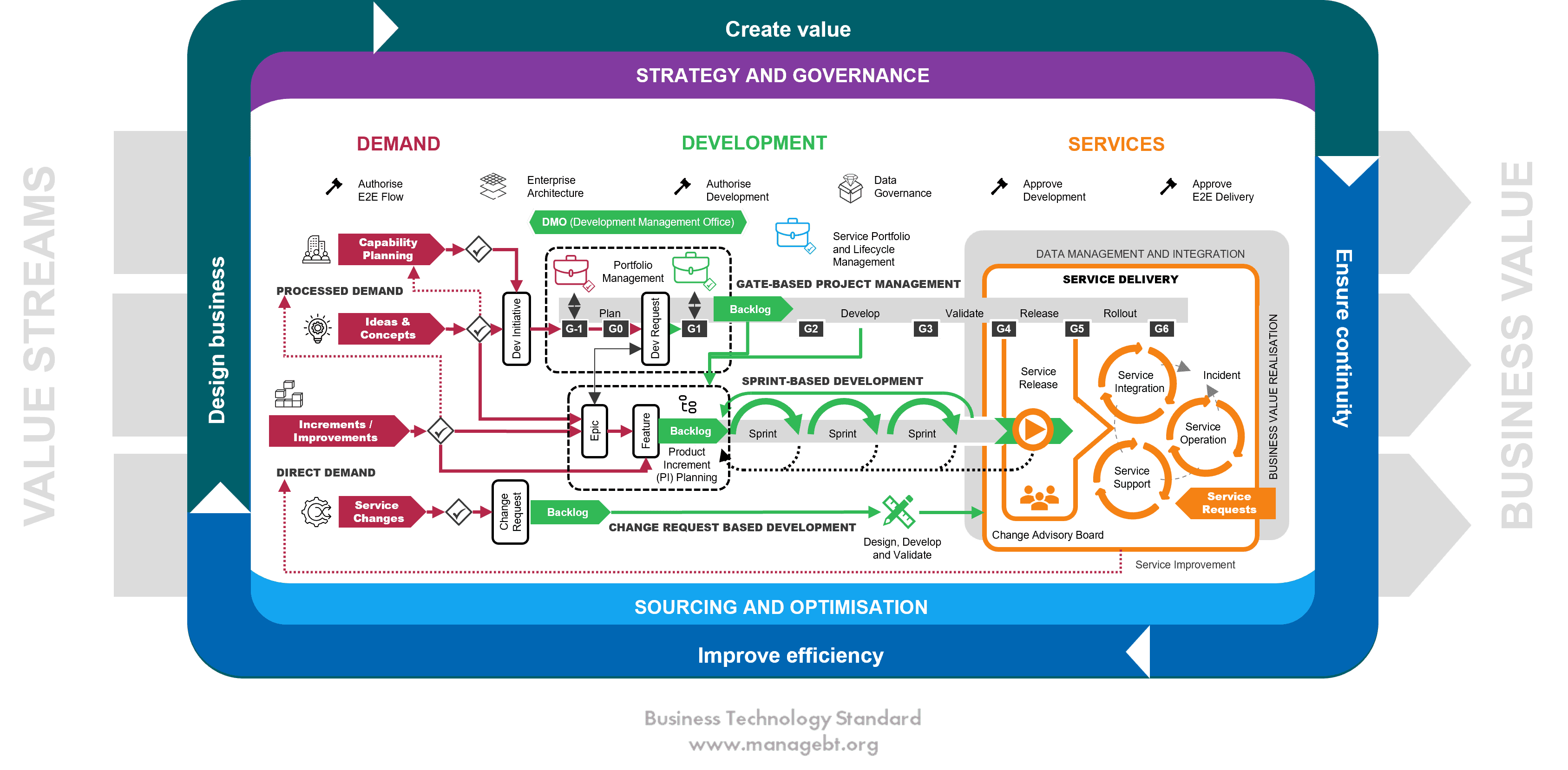Service operation ensures an efficient delivery of services without unplanned interruptions. Services are operated according to Service Level Agreements (SLAs) and Key Performance Indicators (KPIs) setting criteria for service availability and quality. Successful service operation requires seamless collaboration across teams and service provider ecosystem.
Service providers, external and internal, are responsible for professional delivery of their services. They are also responsible for managing the service delivery in such a way that all their services form an integrated entity. Service operation activities are managed by dedicated line organisation or by the multi-expertise development and operations team.
Service integration oversees the service quality and is responsible for unifying and harmonising service processes across services and service providers. It is also responsible for ensuring a seamless integration of services for a better user experience.
Key Performance Indicators (KPIs) help organisations to understand how well services are performing in relation to predefined goals and objectives. In a broad sense, KPIs can provide the most important performance information enabling organisations or their stakeholders to understand whether the organisation is on track or not. Quite often several individual Service Level Agreements (SLAs) affect common KPIs.
Service measurement examples:
| SERVICE DELIVERY | SERVICE OPERATIONS AND PROCESS PERFORMANCE | ECOSYSTEM PERFOMANCE |
|
|
|
Analytics, performed by the service integration team or centre, is an essential activity to measure the performance of service operations. As the requirements for the quality of services increase and business technology environments become more complex, there is a need for qualified decisions based on intelligent and accurate information. Turning large volumes of data into knowledge will enable forecasting and staying one step ahead of events.
Measurement and analytics should be a continuous process that proactively detects service status and potential issues and provides comprehensible information that can be used to make preventive actions and improvements.
Most organisations are constantly seeking new ways to increase the productivity and lower the operational costs. This can be achieved by increasing the level of automation. There are many types of automation solutions for service operations like for example:
Robotics and Artificial Intelligence (AI) are emerging trends that are reshaping the world. They can improve productivity, efficiency and flexibility of service operations. When using algorithms together with human workforce, the algorithms learn and can take care of more and more of the routine tasks and thus leave the more complicated and meaningful tasks to humans.
Figure 6.3.1 Cognitive agent and software robotics
Robotics and AI also need governance and that’s why integrating and managing them with a service management platform is essential to maintaining the overall transparency and control of processes.
Automation solutions can be utilised for the following activities:
| Interaction | Decision-making | Process execution |
|
|
|
